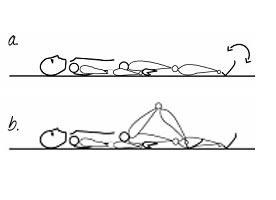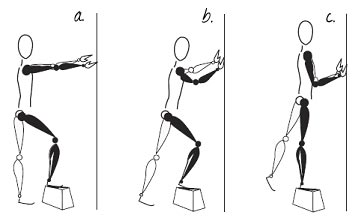18 Jul Exercise for Arthritis
What should we be doing when we’ve had a diagnosis of osteoarthritis (OA)? We’re already in pain, movement hurts, joints are swollen, range is limited. How did this happen in the first place?
Our joints are precise configurations of bones, tendons, ligaments and myriad other connective tissues. When disturbed by muscle imbalance and poor biomechanics, joints suffer abnormal wear and tear. The result is pain, then stiffness and finally range of motion limitations. Swelling may accompany any or all of these stages. The diagnosis, osteoarthritis, is an inflammation of the cartilage on the ends of the bones where they meet and form a joint. OA develops over a long period of misuse, poor nutrition and untreated injuries.
It’s important to keep moving when you have OA. But what kind of movement should you do? One-size-fits-all exercises are not very useful. Rote imitation of an exercise is not the best approach either. You need specific, targeted exercise sequences to mobilize joints and retrain muscles that cross the joint in question. Strengthening is important and should come after you have reduced your pain and have more movement.
In other words, what counts is the quality, not just the quantity of the movement. Why is this important? When you are in pain, your focus is drawn to that area. You naturally guard against the pain by stiffening the joint even before you move. By using breathing, timing, body-part initiation and attention to the space through which the limb moves, you can ease that tightness and fear of pain. A mindful, focused performance of your exercises also raises your awareness of how you are using your body. Mindfulness gets you out of your own way so your exercises are more effective. Let me take you through two examples of mindful, focused exercises for an arthritic knee.

Heel Slide: a mobilizer for hip, knee and ankle.
a) Start lying face up with both legs straight. Flex your right ankle (toe goes toward shin).
b) Take a belly breath and exhale while you slide your heel up toward your sitting bone. When your heel is near your left knee, relax your ankle and rest your foot on the floor. Return your heel through the same pathway, that is, flex your right ankle, slide your heel away and rest in the starting position.
Do these two simple movements slowly and smoothly paying attention to the straight pathway in which your heel is traveling. Breathe out with the movement. Your right knee faces upward toward the ceiling at all times, not inward or outward. Use a long, slow exhalation that controls your speed. Keep your heel connected to the floor. If you have pain, focus your breathing and slow down. Alternate feet-legs for a total of ten (10) repetitions.
Step-ups: for strength in using stairs
Taking stairs is often a problem with arthritic knees. This Step-Up exercise will improve your biomechanics and strength. It re-trains your knee action as you move your body weight over the supporting leg and foot. In this way your knee takes less stress and the muscles work more efficiently.

Use any step in your home, touch a wall or bannister for balance. Choose a low step height that’s comfortable for you.
a) Preparing: face the step and put your right foot on it. Touch the wall for balance.
b) Rocking: rock forward onto your right foot then backward onto your left. Your heels may lift a little. Keep your shoulders over your hips. Do not lean or tilt your shoulders forward. Feel the weight of your body down through your leg, foot and into the step. This is called a “weight shift.”
c) Rising onto the step: repeat the forward weight shift, then slowly straighten your right knee so you are standing up on your right foot. Hold on for balance and remain on one foot if you can. Feel your weight on the step. Take your time. Lower slowly back to floor taking weight onto your left foot and repeat the right step-up exercise several times. Work toward a smooth, even shift of weight onto your right foot and a rise to a straight leg. Avoid “popping” up. Change to your left foot and do the complete step up—rock and rise— on your left. Start with 5 step-ups on each side and work up to 10.
Look down at your knee as you shift your weight and be sure it moves forward and not inward or outward. This keeps your joints properly aligned. Breathe normally throughout. Pressing your weight into the step improves your strength and your grounding. Every time you use stairs go slowly and use your weight shift awareness. In almost every case, you can expect less knee pain.
©Dianne L. Woodruff 2010
by Dianne L. Woodruff, CMA, PhD, Illustrations by Julia Blushak
